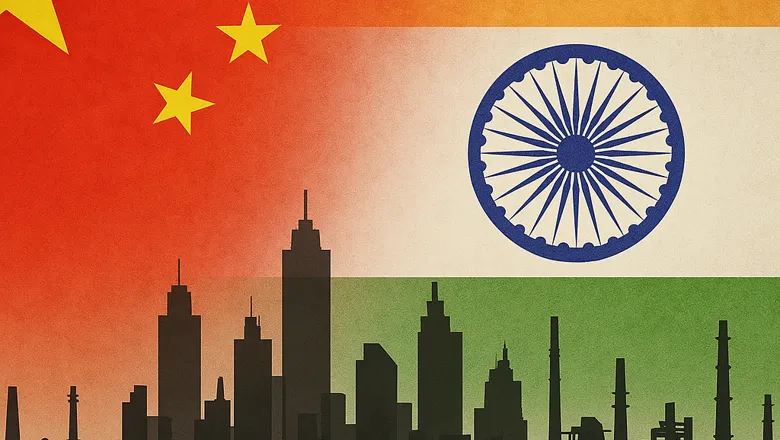In China all the basic facilities, like shopping malls and mobile signal, would be here first; it would be mandatory. The government would send a command to establish them. But here, it’s democratic … the government can’t just tell Airtel to set up a tower.
Study participant
02 July 2025
South India's 'Industrial City' Reveals Complexities of Copying China's Urban Model
Copy-Paste Urbanism? The Uneven Journey of China’s SEZ Model in South India

A recent study has cast light on the challenges and contradictions of replicating China’s Special Economic Zones in rural South India, revealing how efforts to emulate China’s rapid industrialisation have produced mixed and often unexpected results.
The research by King’s Lau China Institute examines a privately-run “industrial city” in South India, designed to mirror China’s successful SEZs like Shenzhen.
Published as a chapter in the book The Urbanising Dynamics of Global China, the study calls for more attention to the lived experiences of those affected by such projects and warns against viewing SEZs as one-size-fits-all solutions.
Special Economic Zones are designated geographic areas that have different economic regulations than the rest of the country, often with the goal of attracting foreign investment and boosting economic activity.
The Indian city, which remains unnamed for confidentiality, was built with Chinese planning expertise and hosts several Chinese firms.
“This is not a simple case of policy transfer,” says lead author Dr Charlotte Goodburn. “It’s a complex, messy process shaped by local politics, private interests, and cultural norms.”
The city was inspired by a Chinese industrial zone and planned by the same international consultants. But while China’s zones were state-led and rapidly urbanised, the Indian version is privately owned, slower to develop, and located in a remote rural area with poor infrastructure.
The study also highlights how multinational firms—many with experience in China—have imported gendered hiring practices, preferring young rural women for factory work.
These women are housed in tightly controlled hostels, with limited freedom of movement, echoing China’s “dormitory labour regime” but with even stricter social constraints.
“Women are seen as more docile and less likely to unionise,” the authors note, adding that while some women gain financial independence, others face harsh restrictions and limited long-term prospects.
Perhaps most striking is the fate of local villages absorbed into the industrial city.
Like China’s “urban villages,” these communities remain physically and socially marginalised. Promised jobs and development have not materialised for many, leading to rising inequality and resentment.
“Villagers sold their land but now work as low-paid labourers on the same ground,” the study reports.
The authors argue that models like China’s SEZs cannot be simply copied. Instead, they are “dynamic assemblages” that mutate in new contexts.
In India, the result is a hybrid form of urbanisation—part Shenzhen, part Gurgaon, part something entirely new.
“This is not just about economics,” said co-author Dr Jan Knoerich. “It’s about how global models interact with local realities to shape people’s lives.”
Read more:
Chapter Importing export zones: Processes and impacts of replicating a Chinese model of urbanisation in rural south India by Charlotte Goodburn & Jan Knoerich
from The Urbanising Dynamics of Global China (Routledge ISBN 9781003621775 )


